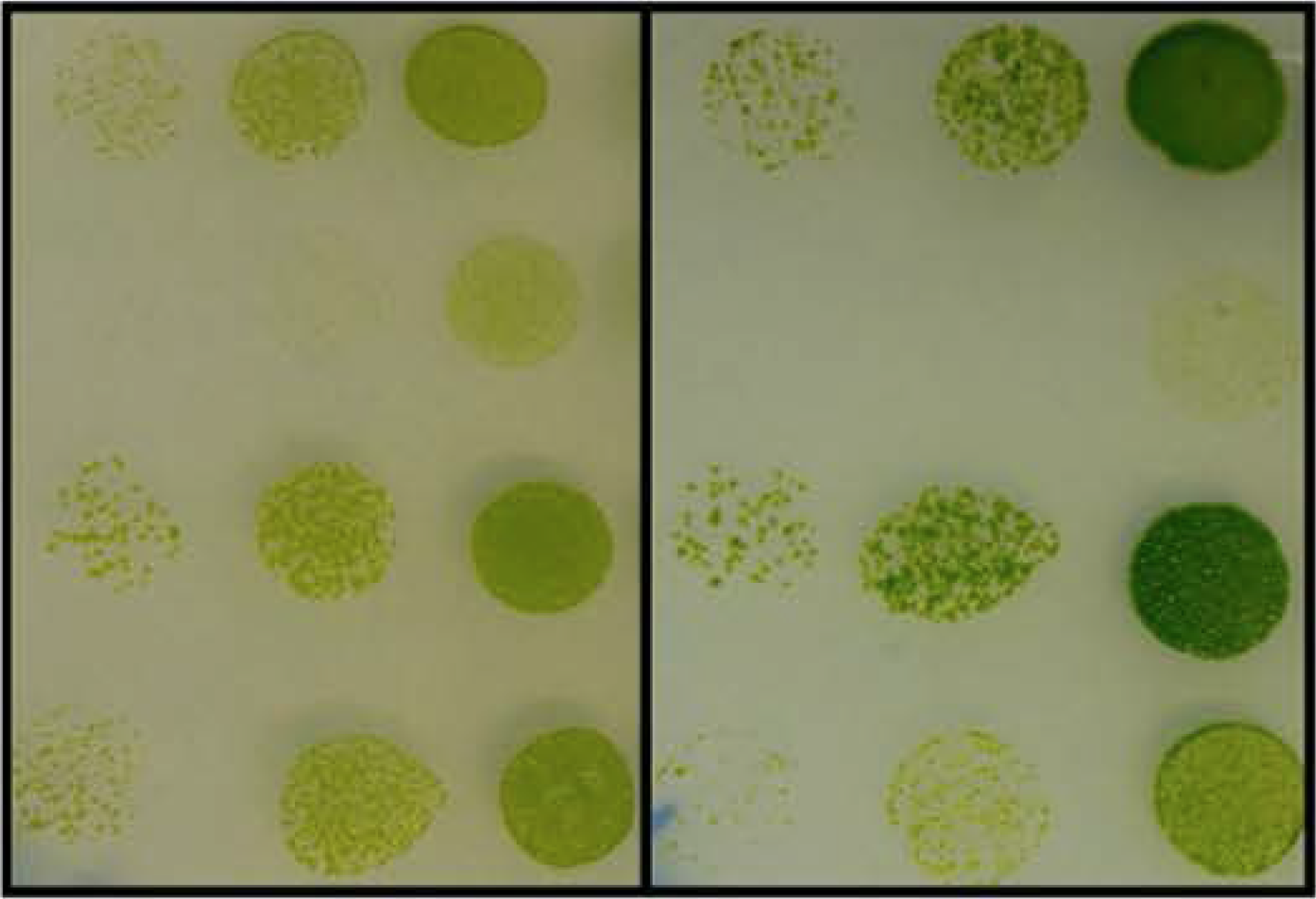博文
Plant Physiology:线粒体在绿藻的光合作用中发挥重要作用
||
Mitochondria affect photosynthetic electron transport and photo-sensitivity in a green alga
Photosynthetic organisms (光合生物) use sunlight as the primary source of energy to support their metabolism. In eukaryotes reactions responsible of the conversion of light into chemical energy occur in specific organelles, the chloroplasts. In this study we showed that mitochondria also have a seminal (有重大影响的) influence on cells' energy metabolism and on photosynthetic reactions. This is illustrated by the observation that the strong photosensitivity (感光性) of Chlamydomonas reinhardtii (莱茵衣藻) cells depleted of the chloroplast protein PGRL1 was rescued by the introduction of a mitochondrial mutation affecting respiratory complex I (呼吸复合物I). Functional analysis showed that such a reduced respiratory activity influenced chloroplast electron transport with consequent over-reduction (过度还原) of plastoquinone (质体醌) and donor-side limitation of Photosystem (PS; 光系统) I. As a consequence, damage due to excess light affected more Photosystem (PS) II rather than PSI. Double mutant cells are able to grow under excess illumination (照明), while single pgrl1 are not, thanks to the presence of an efficient repair mechanism of Photosystem II. These results also underline the seminal biological relevance (生物相关性) of the regulation of electron transport reactions (电子传递反应) within the photosynthetic complexes. Photosynthetic organisms evolved a strategy to respond to excess light where damage is targeting preferentially to a specific complex, PSII. Cells are able to endure (忍受) extensive damage targeting this complex thanks to an efficient repair mechanisms while, if PSI is affected there are drastic (猛烈的) consequences on growth.
光合生物利用自然光作为其代谢的主要能量来源。在真核生物中,将光能转化为化学能的过程主要在植物的特殊的器官中进行,就是植物的叶绿体。在本文中,作者的研究显示植物的线粒体同样在细胞的能量代谢和光合反应过程中扮演着非常重要的作用。莱茵衣藻细胞具有较强的感光性,在叶绿体蛋白PGRL1被破坏后莱茵衣藻的感光性会减弱,而该过程可以被一个影响呼吸复合物I的线粒体突变所恢复。功能分析显示呼吸活性的降低可以影响叶绿体电子传递,导致质体醌的过度还原以及光系统I供体侧的限制。因而,相比于光系统I,过度光照更有可能对光系统II造成更大的影响。双突变体的细胞可以在过度光照的条件下生长,而单个pgrl1突变则不可以,这主要是归功于光系统II的高效修复机制。本文的结果显示了光合复合物间电子传递反应的生物相关性。光合生物演化出了一种响应于过度光照的策略,通过优先靶向PSII来避免更多的伤害。由于光系统II高效的修复机制,细胞能够忍受大范围的破坏,而如果是PSI受到影响的话,可能会对植物的生长造成剧烈的影响。
通讯:Tomas Morosinotto (https://www.biologia.unipd.it/en/persona/?tx_wfqbe_pi1%5Baccount%5D=tomas-morosinotto)
研究方向:藻类作为材料用作生物燃料的生产;植物从水生到陆生过程中光合作用的演化和适应;类胡萝卜素生物合成酶的结构与功能研究。
doi: https://doi.org/10.1104/pp.17.01249
https://blog.sciencenet.cn/blog-3158122-1099252.html
上一篇:Nature:柑橘属物种起源和演化的基因组学研究
下一篇:the plant journal:EZL1基因调控二穗短柄草开花
全部作者的其他最新博文
- • Plant Physiology:CsMADS3促进柑果中的叶绿素降解和类胡萝卜素合成(华中农业大学)
- • Molecular Plant:LBD11-ROS反馈调节作用于拟南芥的维管形成层增殖和次生生长(浦项科技大学)
- • Science Advances:根结线虫通过调控植物的CLE3-CLV1模块,促进侵染进程(日本熊本大学)
- • Nature Communications:油菜素内酯参与植物营养生长期转变的分子机制解析(浙江农林大学)
- • Current Biology:光合作用产生的蔗糖驱动侧根“生物钟”(德国弗莱堡大学)
- • PNAS:花同源异型基因在叶中被抑制、花中被激活的分子机制(南卡罗来纳大学)

